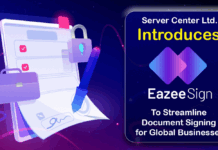For years, traditional face-to-face coaching has been a staple in the workplace. With a coach by your side, you are able to pinpoint your weaknesses and work on them in real-time. But thanks to the rise of digital technology, digital coaching is becoming more popular than ever before.
Digital coaching companies like CoachHub offer many benefits over traditional face-to-face coaching that make it worth considering for your company’s success – including its ability to help with diversity & inclusion efforts!
Digital Coaching on the Rise

Digital coaching is on the rise. The practice has been around for years, but it’s only recently that digital coaches have become more widely available as a resource for employees to support their wellbeing and help them stay healthy and productive at work.
Digital coaching is an effective way to promote diversity and inclusion in your workplace by providing you with access to a wide range of coaches who understand different backgrounds, cultures and ways of thinking.
The Case for Digital Coaching
Digital coaching is a way to deliver coaching to people who are not in the same location.
This can include remote employees, or employees who don’t want to go to a face-to-face session. It can also be used for employees who are not comfortable with traditional coaching, or who simply prefer the convenience of receiving their feedback through digital means.
Key Advantages of Digital Coaching
Digital coaching is more cost-effective. A digital coach can work with a large number of employees at once, providing instant feedback and support as needed. This allows for the efficient delivery of coaching services to an entire organization—and it keeps costs low by reducing the need for face-to-face meetings with coaches.

Digital coaching is more accessible. Digital tools like video conferencing make it easy to connect across geographies, allowing your organization’s leaders to reach out across traditional borders while staying in touch with their teams (including those who may be working from home or on the road).
Digital coaching can be used to support a diverse workforce. Many employees feel isolated because they don’t have access to the same resources as their colleagues who are based in one location; digital workplace solutions allow everyone within your organization’s networked structure access
What About Face-to-Face Coaching?
As you can see, digital coaching has its benefits. But that’s not to say it’s the only way to go. You can still make use of face-to-face coaching methods if they’re more effective for your needs or the employee in question. If you decide to implement a combination of both types of coaching, be sure that the employees get some time with their coaches in person (or at least on video chat).
There are many ways to combine digital and face-to-face coaching—for example, an employee might meet with her coach once every few weeks for an hour via video chat and then get additional support from her coach through email or instant messaging during other times in between those meetings.
Creating a Digitally Savvy Workforce

Digital coaching helps employees learn new skills at their own pace, in a low-pressure environment. When you teach your employees to learn on their own, they will be more likely to use the skills you’ve taught them in real life situations.
Digital coaching can also help improve diversity in your workforce. By creating an inclusive and friendly workplace culture, you’re more likely to attract and retain employees from underrepresented groups (such as women or minorities) who may otherwise feel uncomfortable entering tech industries dominated by white males.
Global Talent Retention in a Fully Remote World
As you are well aware, the remote work trend is on the rise. And with that comes unique challenges for organizations to retain top talent, especially when these individuals are working across borders and cultures.
As a manager of a fully remote team, you need to make sure your company is equipped with everything needed to help ensure employee retention in this new world order. This includes:
● Creating an environment where people feel they matter and trust each other.
● Establishing learning initiatives that grow employee skills and provide opportunities for mentorship from senior leadership.
● Setting up transparency around salaries, roles, responsibilities and performance expectations so everyone understands how their work fits into the larger picture at any given time.* Fostering collaborative teamwork through open communication channels like
Slack or Basecamp.* Making sure everyone gets feedback from both peers AND leaders – it may seem obvious but often times it’s only one or two channels which can cause some confusion about goals/expectations.* Encouraging employees to tell each other when mistakes happen – rather than focusing on what went wrong (which doesn’t help anyone improve) focus on how we can fix them together!
The Importance of Wellbeing at Work

Wellbeing at work is an important factor in employee satisfaction. It’s also linked to productivity and innovation, which means that it can contribute significantly to the bottom line. If you want your employees to be as productive as possible, then you need to consider wellbeing in your workplace culture.
Wellbeing can be measured by wellbeing surveys and these can help you improve your business’ wellbeing by improving its working environment, work/life balance and culture.
Diversity and Inclusion in the Workplace
Diversity and inclusion in the workplace are issues that all companies have to deal with, but they can make a difference in employee retention and productivity.
Digital coaching can be used to support diversity and inclusion by helping employees feel more comfortable speaking up about their experiences as well as giving them access to professional development opportunities outside of work. This will encourage them to speak up if they see an issue happening within the company, which will decrease the chance an issue goes unnoticed or unresolved before someone speaks up about it.
Beyond Wellbeing, Diversity and Inclusion in Corporate Culture
Digital coaching can also have a positive impact on employee wellbeing and diversity.

Employee wellbeing is often cited as one of the biggest challenges facing organisations today. With the average UK worker spending 6 hours and 15 minutes per day on their devices, it’s important that businesses are doing everything they can to increase employee engagement and wellbeing in this digital age. Digital coaching helps employees feel more engaged with their work because it:
● Enables them to adopt an active role in managing their own learning
● Encourages reflection about how well they are doing at work (and provides guidance on how to improve)
● Offers new ways of working – be it through video conferencing or online webinars
Digital coaching can support your company’s wellbeing and diversity efforts.
Digital coaching can help you create a more diverse and inclusive workforce.
In today’s competitive talent market, companies are looking for ways to attract and retain top talent. One way is through their workplace culture—but it’s often difficult to make changes while balancing the demands of day-to-day work and company goals. Digital coaching allows you to implement new initiatives quickly and easily, which means you can start improving your current employee experience right away.
Digital coaching also supports your company wellness efforts by encouraging employees to take control over their own health by providing them with the tools they need on their terms (i.e., when it works best for them). That means less time taking sick leave or going home early due to exhaustion caused by long hours spent at work—and more opportunities for all employees regardless of their background or lifestyle choices!
Conclusion
As we’ve seen, digital coaching is an effective way to support your company’s wellbeing and diversity efforts. One of the most exciting things about this new form of coaching is that it enables us to reach people in ways that were previously impossible. By leveraging the power of technology, we can allow people from all over the world to connect with their coaches and have a richer experience than ever before—in short, it’s time to embrace this brave new world!







